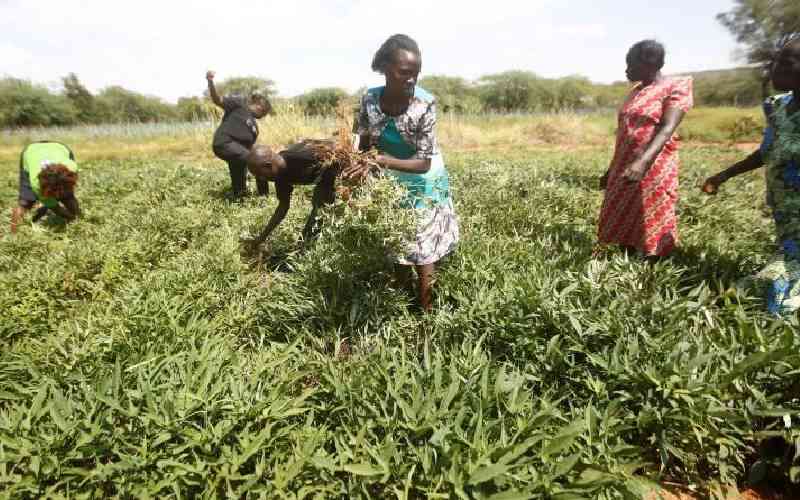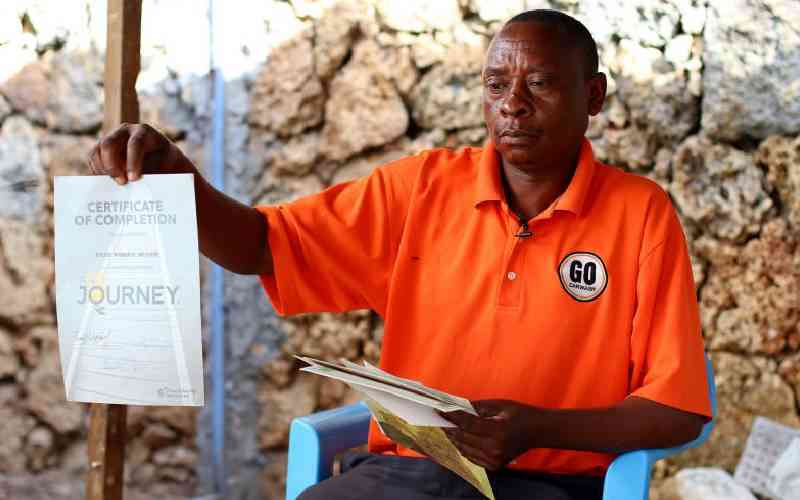Allow me to wade into the debate on achieving at least one-third of women representation in the National Assembly and the Senate, which constitute the institution of Parliament. The matter relates to the gender principles in Articles 27(8) and Articles 81(b) of the Constitution.
As a Kenyan, I am entitled to freedom of expression under Article 34 of our Constitution. This therefore, is not about me as National Assembly Speaker, who under Article 122 has no vote in debate. Suffice to say, my opinion on this matter, if any, does not count in the House. What that means is MPs have a leeway to bring on board whichever legislation to anchor women representation in elected positions to at least 1/3 of the total.
Back to my proposal and my considered opinion is that, we can amend Article 97 (i) – b, c of our Constitution so as to do away with the positions of elected Women Reps and nominated MPs, and create not more than 100 affirmative seats to unlock the current gender impasse. This amendment does not require a referendum, but will help cure the current state of affairs without much acrimony.
We cannot, as a country, bury our heads in the sand and pretend all is well when our women are put on the periphery in key decision making arms of the Government. But we must also agree that democracy is about competition, and freebies are not part of it. We must therefore, rise up to the reality and create the requisite atmosphere for our women to competitively participate in elections and join Parliament and the county assemblies.
The Advisory Opinion No. 2 of 2012, by the Supreme Court was that this gender parity should be achieved progressively. That essentially means that Parliament is not confined to August 27; deadline to enact legislation geared towards addressing that matter.
It is however, worth noting that even if it were so, Parliament and the National Assembly in particular would be within the stipulations of the Constitution to extend that deadline by a year.
I am only trying to diffuse is the assertion by some not-so-well informed quarters that the country would be in any crisis if that deadline is not met.
Pointedly however, Parliament is under obligation to formulate a Bill for debate to enact legislation giving effect to Article 100 of the Constitution by August 27, 2015. The Article points to promotion of representation in Parliament of women, youth, persons with disabilities, marginalised and minority groups. To that end, Parliament and the National Assembly in particular, will work round the clock to ensure the Bill is passed within the stipulated timelines. Unfortunately, the Executive and CIC are taking time to submit this critical to Parliament.
The House can only wait, but in the meantime, we have the opportunity as Kenyans to make proposals on how this can be achieved.
Let us do simple arithmetic, based on my proposal and see whether it holds water: with 290 elected MPs from single member constituencies, add 47 Women Representatives (Counties) and 12 nominated MPs, this sums up to 349 members. The current chamber refurbished during the last Parliament at a cost of about a billion shillings is meant to accommodate the 349 members. Even during joint sittings of Parliament, we add chairs in the House to allow some more 67 members from the Senate to participate.
If we go by my proposal, we shall have 290 members from single constituencies, plus NOT MORE THAN one hundred, meaning we give mandate to the IEBC to come up with regulations to actualise my proposal in the sense that first we subtract the women MPs elected from the 290 constituencies from the percentage thereof to get the remainder percentage needed to fill.
For instance, with the current number of elected female MPs from the single member constituencies, we would have 16 divided by 290 to get 5.5 per cent.
What that means is, we need an additional 24.5 per cent to meet the threshold, and that’s the number we would pull from my proposal of 100 affirmative seats. It means we would require 30 per cent of 349, which is 104.7, roughly 105. Essentially, we would then get formulae done by IEBC to have 89 more women competitively joining the House.
That way, we would have maintained the status quo without any more burdens on the tax payer. I reckon that IEBC in their regulations can compel political parties to do their nominations in a manner that the final list of those going to the ballot in the political parties’ lists is even 50/50 women to men.
In this case, we will end up having a huge number of women elected to the county assemblies and Parliament; hence deal with any possibility of nominations. It will be a cure for the cancer of biased nominations by political parties under Article 97 (c) of the Constitution, where my friend or a friend of a political party chief find their way into Parliament without going through a competitive election.
I have considered various suggestions on how we can go about this, including the one proposed by women legislators that we need to have two women representatives per county, whose result is 94 then nominate the rest.
Stay informed. Subscribe to our newsletter
This would be a bloated Parliament, which would end up being costly for the tax payer. I do not think we need that kind of a burden for now.
We should also bear in mind that for any additional MP, it would equate to, an office, more staff allocated to them, expansion of the chambers and any provision of facilities they would require to effectively deliver. The public debate has been about reducing the number of the current Parliament, not increasing. However, whether that will be done remains to be seen. These are only my opinions.
– The writer is Speaker of the National Assembly
 The Standard Group Plc is a
multi-media organization with investments in media platforms spanning newspaper
print operations, television, radio broadcasting, digital and online services. The
Standard Group is recognized as a leading multi-media house in Kenya with a key
influence in matters of national and international interest.
The Standard Group Plc is a
multi-media organization with investments in media platforms spanning newspaper
print operations, television, radio broadcasting, digital and online services. The
Standard Group is recognized as a leading multi-media house in Kenya with a key
influence in matters of national and international interest.
 The Standard Group Plc is a
multi-media organization with investments in media platforms spanning newspaper
print operations, television, radio broadcasting, digital and online services. The
Standard Group is recognized as a leading multi-media house in Kenya with a key
influence in matters of national and international interest.
The Standard Group Plc is a
multi-media organization with investments in media platforms spanning newspaper
print operations, television, radio broadcasting, digital and online services. The
Standard Group is recognized as a leading multi-media house in Kenya with a key
influence in matters of national and international interest.








